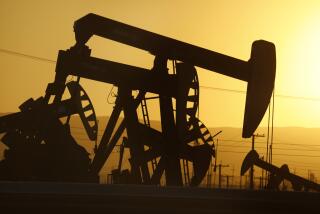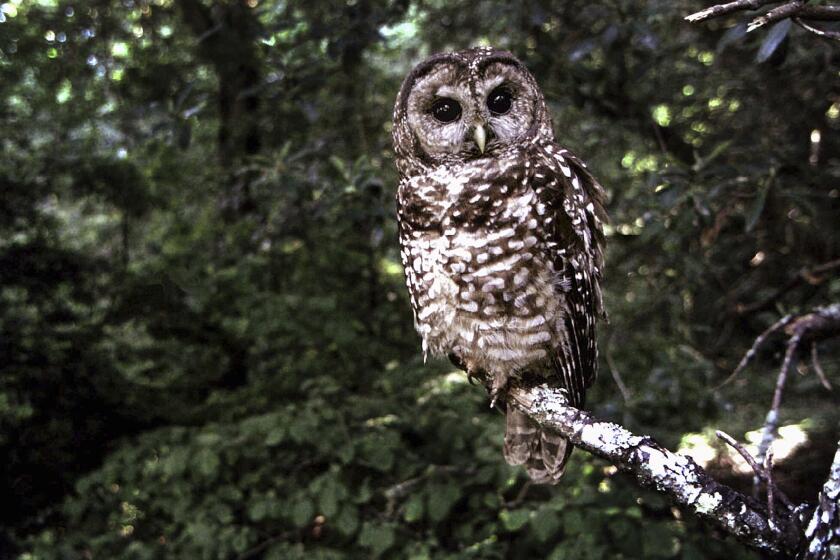California’s biggest oil spill in decades brings more defiance than anger from locals
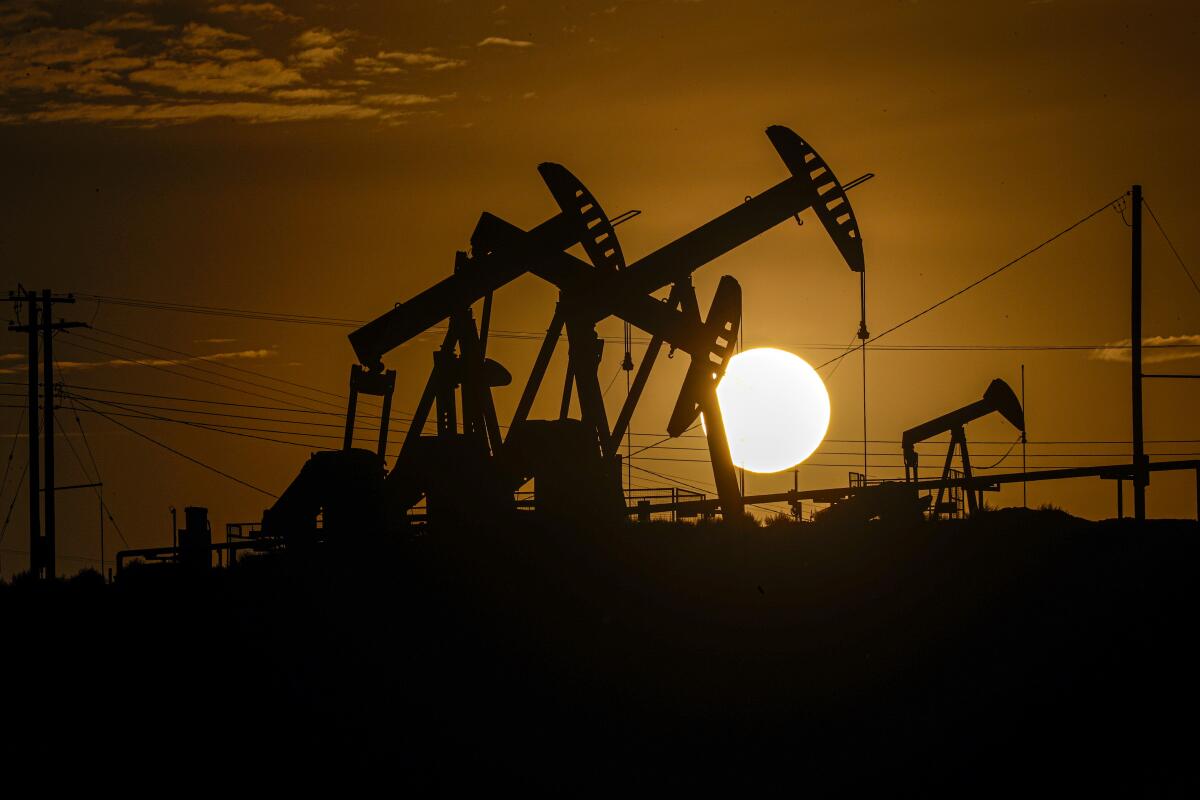
- Share via
McKITTRICK, Calif. — Near the jagged western edge of Kern County, where the Temblor Range gives way to a landscape of steam pipes, fuel lines and bobbing pump jacks, there’s a definite mood in this dusty little oil town: Defiance.
Hardly a day goes by without reports of the growing oil leak in nearby Cymric oil field. So far, more than 900,000 gallons of oil and brine have oozed from a Chevron Corp. well and filled a dry creek, creating a hazardous black lagoon.
The residents of McKittrick, population 145, understand why people are upset by the images. Also, there’s no avoiding the worry that prolonged exposure to crude oil might one day trigger health issues.
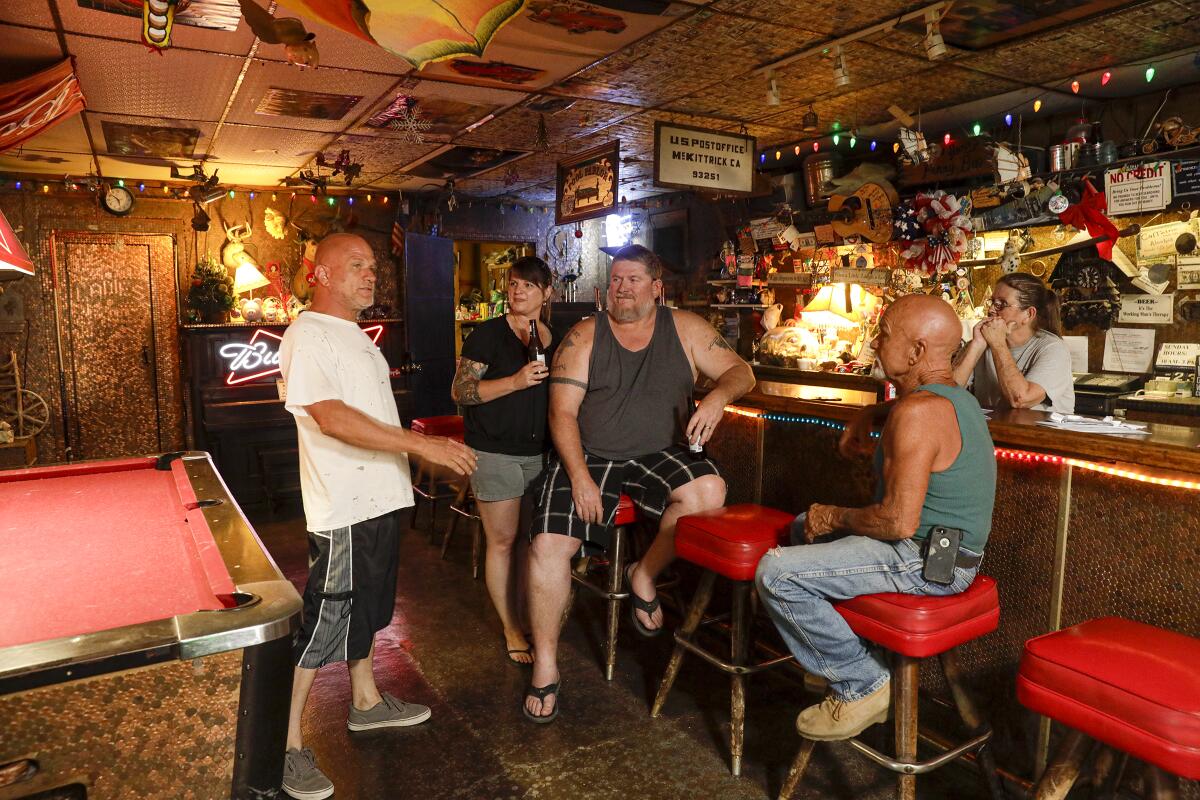
But judging from the rowdy talk over cold beers and a blaring jukebox at Mike and Annie’s Penny Bar — a watering hole for thirsty oil field hands that has over a million pennies glued to the bar, floors, walls, television and entrance — the locals see a different story playing out.
“Environmentalists have it all wrong,” argued Troy Smith, 46, an oil field worker who grew up in the area. “Compared with the catastrophic Exxon Valdez oil spill in Alaska and BP’s deep-sea spill in the Gulf of Mexico, our little outbreak is nothing. Yet, they’re using it as an excuse to shut down California’s oil industry and wipe us out.
“What more do they want?” he asked no one in particular. “We already work under the strictest standards imaginable, and adhere to them tooth and nail.”
Smith, like many others in McKittrick, was more worried about how the largest California spill in nearly three decades would affect election campaigns and new oil industry legislation in Congress and the state Legislature.
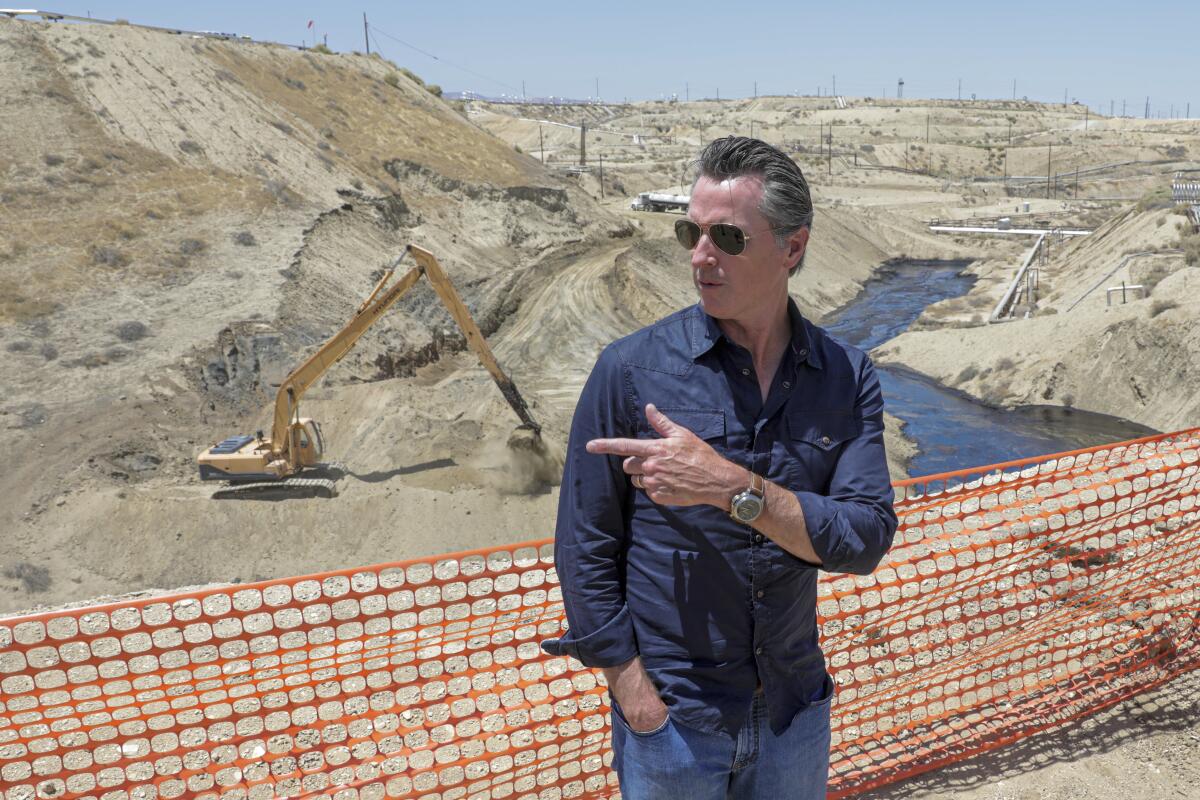
When Gov. Gavin Newsom, who has taken a more anti-oil stance than his predecessor, former Gov. Jerry Brown, ventured to the spill site for a firsthand look Wednesday, the sarcastic response heard across town was, “There goes the neighborhood.”
But the future of California’s billion-dollar oil industry was already being shaped by shifting political winds, building concerns about toxic emissions from oil and natural gas production, development of alternative energy facilities and a recent overhaul of the California Division of Oil, Gas and Geothermal Resources, or DOGGR, the state’s primary oil regulatory agency.
“California can put a stop to the inevitability of oil spills by intentionally transitioning away from oil extraction,” said Kathryn Phillips, director of Sierra Club California. “The state must prioritize our public health and our environment over corporate polluters’ profits.”
That kind of talk raises hackles in the southern end of the San Joaquin Valley, where oil is an economic and cultural force crucial to the lives of thousands of people.
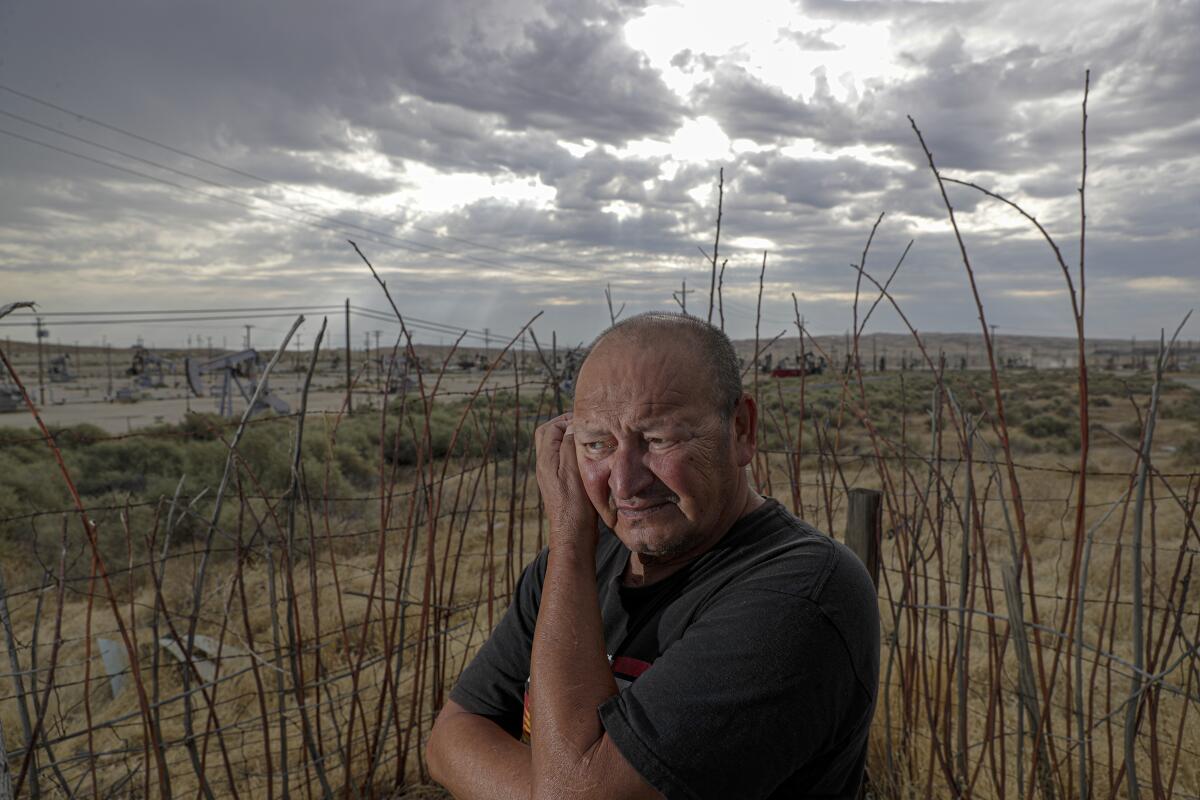
When retiree Raul Rubio, 67, wants to relax, he leans back in a folding chair in his backyard facing an oil field that is miles long and miles wide. The scenery is perfect for sifting through memories of the 40 years he worked as an oil field operator.
An odd sort of duality permeates his feelings about the ongoing oil spill roughly 3½ miles from his modest wood-framed home.
On one hand, he can recall many industrial accidents over the years that could have had potentially devastating consequence. But he also appreciates the simpler, old-fashioned, slower pace of life.
About 12 years ago, a Cymric well blasted a mixture of oil and water so high that it traveled for miles in the wind. Gooey spots covered the town straddling a lonely stretch of Highway 33 like leopard spots.
“Chevron immediately took responsibility and fixed that well,” he recalled with a smile. “They also paid to clean our cars and property.”
Around the same time, while making the rounds of another local oil field, he said: “I discovered an oil spill that spilled into a ravine and then flowed for miles. That problem also got fixed right away.”
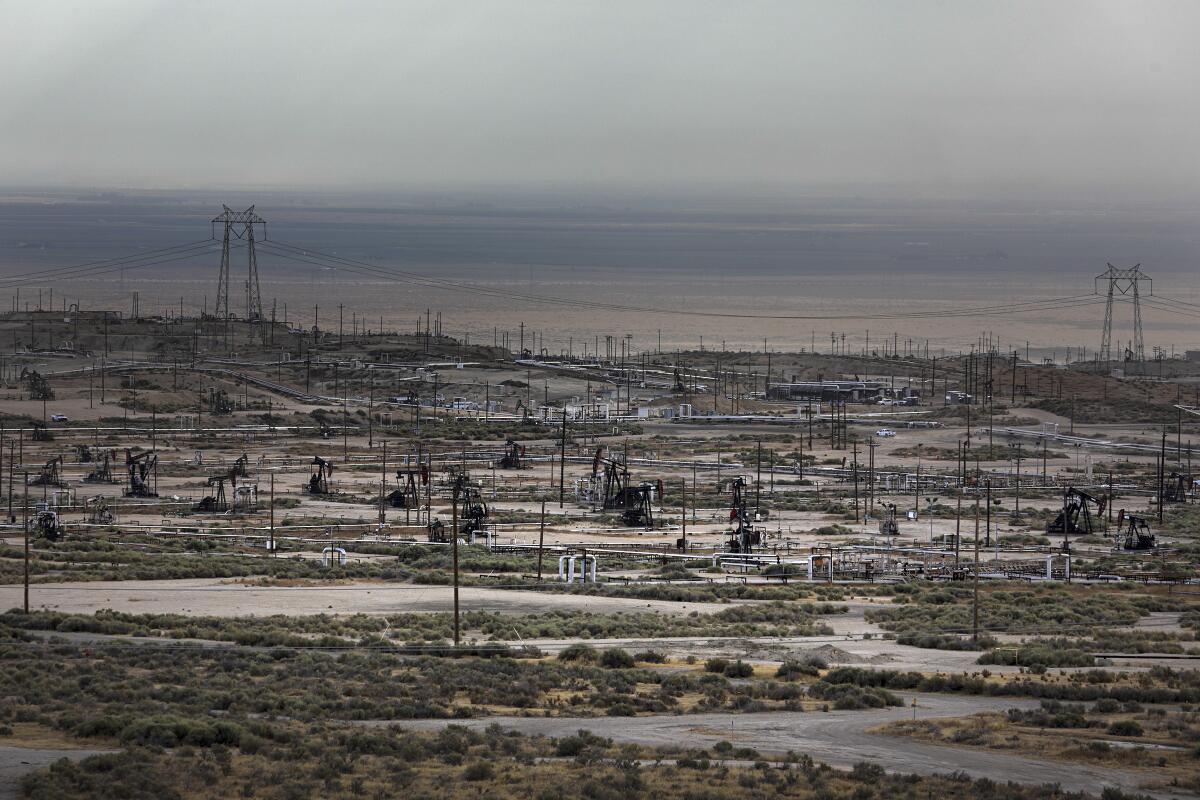
So, he wasn’t all that worried about the ongoing leak at Cymric field. “I know that Chevron is out there cleaning things up,” he said. “They know what they’re doing. If it was a danger to the people living here, they would have notified us.”
Skepticism runs deep here when it comes to environmentalists’ warnings about the dangers posed by oil production and an array of unconventional oil and natural gas extraction techniques and their hazardous byproducts on wildlife, air quality, drinking water in underground aquifers and global climate change.
Don’t believe it. Not a chance. Life is as safe and peaceful as it always has been, locals like to say.
But anti-oil forces aren’t waiting before some of the potential long-lasting impacts from oil wells become evident.
In a state where 5.5 million people live within a mile of an oil well, the Legislature is currently weighing the merits of Assembly Bill 345, which would create 2,500-foot health and safety buffer zones between new oil and gas wells and sensitive land uses including schools, homes and hospitals.
The bill, written by Assemblyman Al Muratsuchi (D-Rolling Hills Estates), was inspired, in part, by a Kern County Superior Court ruling in May that the city of Arvin had illegally approved four new wells adjacent to homes and farms already coping with 10 active gas and oil wells, some of them in agricultural fields.
“This case sends a really strong signal that the oil industry cannot just do whatever it wants — it must follow California’s environmental laws,” said Chelsea Tu, senior attorney at the Center on Race, Poverty & the Environment.
Separately, Newsom in June signed a state budget that earmarked $1.5 million for an unprecedented study to find ways to reduce California’s petroleum production and demand.
A few days later, he fired DOGGR Supervisor Ken Harris for issuing too many permits for hydraulic fracturing, or fracking, and allegations that several of his regulators own stock in major oil companies.
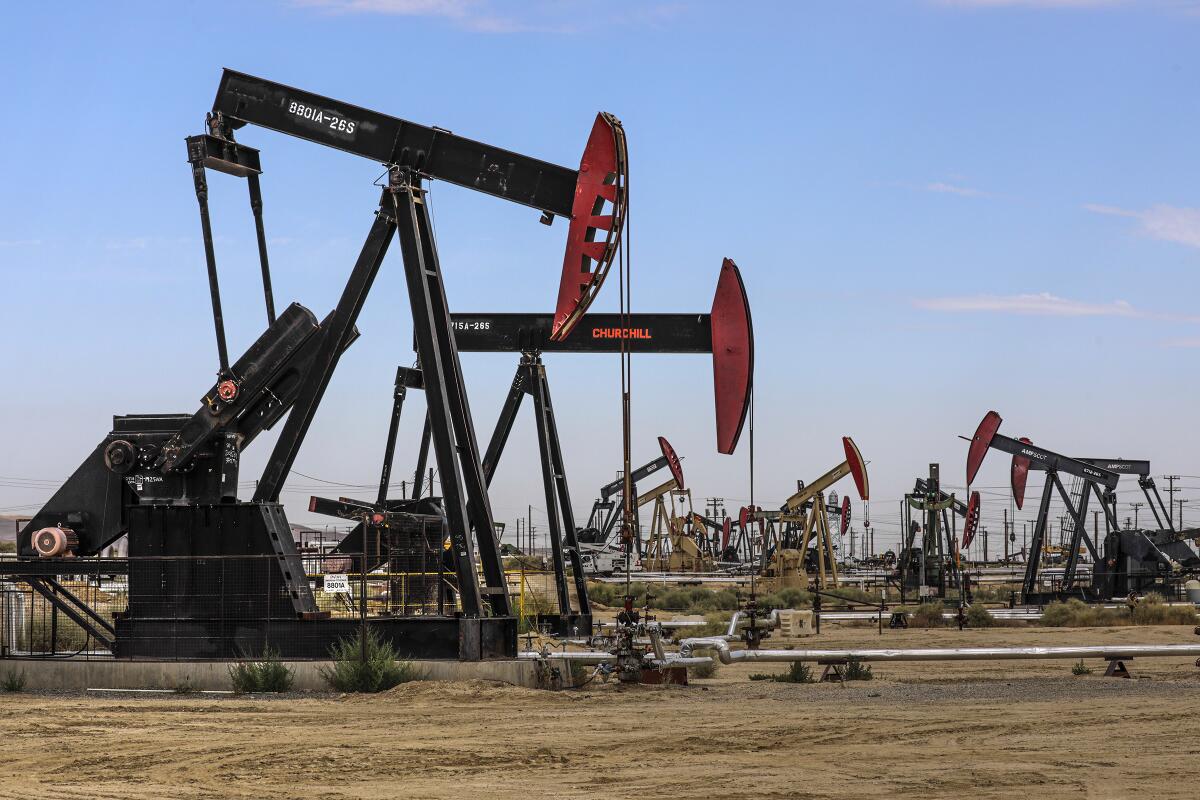
On his first day on the job, Jason Marshall, who was appointed acting supervisor at DOGGR, ordered Chevron to “take all measures” to stop the seepage at the Cymric field that has continued intermittently for more than two months.
He’s been frustrated by an inability to get clear answers to some basic questions: Why hasn’t the leak been stopped? Why did Chevron and state regulators wait two months to formally alert the public about the problem that began May 10?
In an interview, Richard Hinkley, general manager in Chevron’s asset development business, said he believes that the seepage started after crews used cement to fortify a dormant well that in 2004 had been taken out of commission and permanently sealed.
Built-up pressure from an oil reservoir under the well, he said, forced liquid — which was about two-thirds water and one-third oil — to the surface through “paths of least resistance,” including cracks and fissures in the concrete and steel well bore during the cement job.
So far, he said, crews have vacuumed up about 90% of the fluid that had pooled in the dry creek bed that cuts across the 485-acre oil field.
Chevron initially said the seepage stopped several hours after it was discovered May 10. However, it reactivated June 8 after crews conducted tests to determine its cause — and then continued intermittently in the vicinity of the wellhead.
Two new seepages emerged July 21, officials said, shortly after Chevron crews completed the cementing operation.
Adjacent wells have been shut down and idled wells activated to ease pressure beneath the ground and reduce surface flows. Air cannons were installed to keep wildlife away. Oil work has been halted within 1,200 feet of the site.
So far, there are no reported injuries or threats to drinking water aquifers in the region, officials said.
As for Chevron’s decision not to formally alert the public, Sean Comey, a spokesman for the giant oil corporation, said, “If there had been any risk to human health, we would have responded differently.”
As crews work day and night to plug the leaks, Dave Noerr, mayor of the nearby city of Taft, has been reminding outsiders about the benefits of oil and gas production for jobs and their personal lives.
California is home to 72,000 oil-producing wells that last year produced 165 million barrels of oil from onshore and offshore facilities, according to the California Department of Conservation. California also consumed 366 million barrels of gas in 2017 — more than any other state, according to the U.S. Energy Information Administration.
“There was a time when Kern County was the largest oil and gas producing county in the United States outside of Alaska,” Noerr said. “But oil production has been in decline for some time now, which is too bad because of the employment and sales taxes it generates to support essentials like hospitals and schools.”
Noerr has a personal oil connection: In 1981, he worked as a roustabout in the Kern oil fields. “Man, that was a hot and nasty job in mid-July,” he said.
Linda L. Hillan, 63, a heavy equipment operator who shares a wood-framed house in McKittrick with a huge cat named Big Mama, wouldn’t argue with any of that.
Staring at the darkening clouds of an approaching monsoon that would wash layers of smog and the smell of crankcase oil from the skies on a recent 100-plus-degree afternoon, she grumbled, “Outsiders need to worry about their own backyards — and leave us alone.”
Like most towns, after all, McKittrick is imbued with its own peculiarities.
“There’ve been a million oil spills out here over the years,” she said. “Hell, man, I’ve seen wells catch fire and burn for weeks on end. I’ve seen leaking oil pouring over a hill behind my house like a waterfall.”
More to Read
Sign up for Essential California
The most important California stories and recommendations in your inbox every morning.
You may occasionally receive promotional content from the Los Angeles Times.


